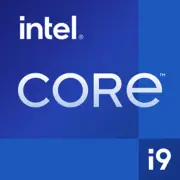Intel Core i9-10980XE

Intel Core i9-10980XE in 2025: Is It Worth Buying an Outdated Flagship?
Updated: April 2025
Key Specifications: Cascade Lake Architecture and Its Features
The Intel Core i9-10980XE processor, released in 2019, still attracts the interest of enthusiasts and professionals. Its Cascade Lake-X architecture is based on a 14nm process technology, which appears archaic in 2025 compared to 5nm and 3nm chips. However, 18 cores and 36 threads with a base frequency of 3.0 GHz (boosting up to 4.6 GHz in Turbo Boost) remain impressive even today.
Key Features:
- Multithreaded Power: 36 threads handle rendering, simulations, and video encoding effectively.
- 24.75 MB L3 Cache: Reduces latency when working with large data sets.
- AVX-512 Support: Useful for scientific calculations and AI tasks but increases power consumption.
Performance:
According to Geekbench 6 (2025), the i9-10980XE scores 1523 in single-core and 11069 in multi-core tests. In comparison, the modern Ryzen 9 7950X (16 cores, 5nm) shows ~2200 and ~23000 points respectively. However, for tasks requiring pure parallelization (such as rendering in Blender), the i9-10980XE is still competitive.
Compatible Motherboards: LGA 2066 Socket and Chipsets
The processor uses the LGA 2066 socket, which is only supported by motherboards with the Intel X299 chipset. By 2025, such motherboards are hardly being produced, but they can be found in the second-hand market or leftover stocks in stores.
Popular Models (new, if available):
- ASUS ROG Rampage VI Extreme Omega — Price ~$300-400 (stock remaining).
- MSI X299 Gaming Pro Carbon AC — ~$250-350.
- Gigabyte X299 AORUS Master — ~$280-380.
Selection Features:
- VRM Module: Due to the high TDP (165W), a motherboard with a quality power system is required (for example, 8+ phases).
- PCIe 3.0: No support for PCIe 4.0/5.0, limiting the speed of modern SSDs and graphics cards.
- Quad-Channel Memory: Allows unlocking the potential of DDR4.
Supported Memory: DDR4 and Its Configurations
The i9-10980XE only works with DDR4, supporting up to 256GB of RAM (8 slots) and frequencies up to 2933MHz (officially) or 3600+ MHz (with overclocking). In 2025, DDR4 falls behind DDR5 in bandwidth but remains cheaper.
Recommendations:
- For professional tasks: 64-128GB DDR4-3200 (for instance, Kingston Fury Beast).
- For enthusiasts: Kits with low timings (CL14-16).
Power Supplies: Calculation for a 165W Monster
When building a system with the i9-10980XE, it's important to consider its appetite and the power consumption of other components.
Recommended PSU Power:
- Minimum: 750W (for systems with a graphics card of the RTX 4070 level).
- Optimal: 850-1000W (with a margin for overclocking and top-end GPUs).
Examples of Models:
- Corsair RM850x (2025) — $140-160.
- Seasonic PRIME GX-1000 — $220-250.
Advice: Choose power supplies with an 80+ Gold/Platinum certification and modular cables.
Pros and Cons: Who Is It Suitable For, and Who Is It Not?
Pros:
1. Multithreaded Performance: 36 threads are relevant for rendering, virtualization, and code compilation.
2. Price on the Second-Hand Market: In 2025, a new i9-10980XE (if available) costs ~$500-600, while the Ryzen 9 7950X starts at $700.
3. Quad-Channel Memory: A plus for workstations.
Cons:
1. Outdated Process Technology: 14nm vs. 5-7nm from competitors.
2. High Power Consumption: Puts a strain on the cooling system.
3. No PCIe 4.0/5.0 Support: A limitation for NVMe SSDs and next-gen GPUs.
Use Cases: Gaming, Rendering, Streaming
- Work Tasks: Ideal for 3D rendering (Blender, Cinema 4D), video processing (Premiere Pro), programming (compiling large projects).
- Gaming: In 2025, the processor is somewhat weak for AAA games at 4K/144Hz due to its low IPC. However, it performs well in games optimized for multithreading (such as Microsoft Flight Simulator).
- Streaming: Good for high-quality broadcasts due to the large number of threads.
Practical Example:
A user on Reddit built a PC with an i9-10980XE and RTX 4080 for work in Unreal Engine 5. Result: rendering scenes takes 15% less time than on a Ryzen 9 5900X, but in games, FPS is 10-20% lower due to the older cores.
Comparison with Competitors: AMD vs Intel
1. AMD Ryzen 9 5950X (16 cores/32 threads, 7nm):
- Single-threaded performance is about 25% higher.
- Price in 2025: ~$450 (new).
- Verdict: Better for gaming and mixed tasks.
2. AMD Threadripper 2970WX (24 cores/48 threads, 12nm):
- Costs ~$600 (new).
- More cores but worse optimization for consumer applications.
3. Intel Core i9-13900K (24 cores/32 threads, 10nm):
- Geekbench 6 Multi-Core: ~18000.
- Price: ~$550.
- Verdict: Best choice for those who value both gaming and multithreading.
Practical Assembly Tips
1. Cooling: Use AIO (for example, Arctic Liquid Freezer II 360) or a top-tier air cooler (Noctua NH-D15).
2. Motherboard: Look for models with enhanced VRM (ASUS WS X299 SAGE).
3. RAM: 4 modules of DDR4-3200 (to enable quad-channel mode).
4. Case: With good airflow (Lian Li Lancool III).
Final Conclusion: Who Is the i9-10980XE Suitable For in 2025?
This processor should be considered if:
- You are a professional on a budget who needs a lot of cores for rendering.
- You already have an X299 platform and want an upgrade.
- The latest technologies (PCIe 5.0, DDR5) are not critical.
Who It's Not Suitable For:
- Gamers focused on maximum FPS.
- Users who prioritize energy efficiency.
In the context of 2025, the i9-10980XE is a niche solution, but for certain tasks, it remains a viable option.
Basic
CPU Specifications
Memory Specifications
GPU Specifications
Miscellaneous
Benchmarks
Compared to Other CPU
Share in social media
Or Link To Us
<a href="https://cputronic.com/cpu/intel-core-i9-10980xe" target="_blank">Intel Core i9-10980XE</a>